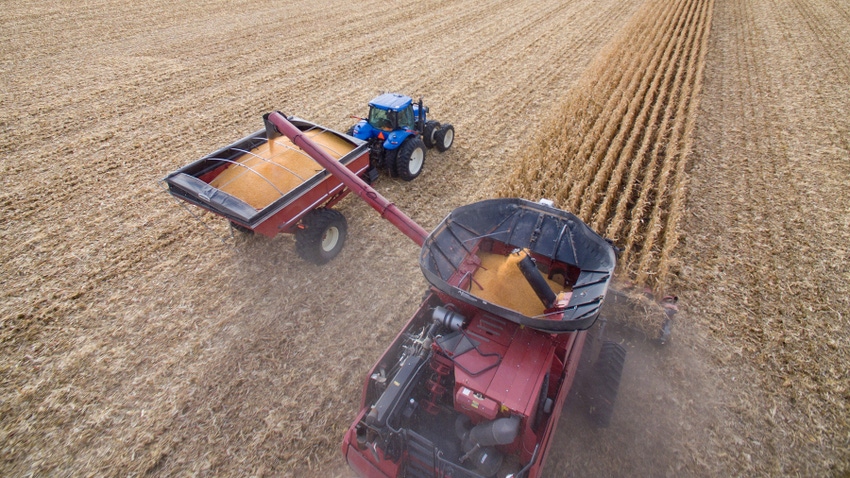
Many times, the monthly World Agricultural Supply and Demand Estimates report is a huge driver – sometimes bullish, sometimes bearish – of grain prices. The agency’s March report, out Wednesday morning, was not one of them.
Soybeans found the biggest boost, moving more than 0.75% higher immediately following the report, thanks to improving exports and historically tight stocks. Corn prices also saw a modest boost on Wednesday morning. Wheat prices were mixed but mostly lower, meantime.
Here’s a closer look at some of today’s numbers:
Corn
USDA is finally admitting that corn exports may not be able to match the agency’s prior projections. The latest export estimates are down 75 million bushels. USDA did not make any other usage changes, so ending stocks moved 75 million bushels higher this month to 1.342 billion bushels. That was well above the average trade guess of 1.308 billion bushels.
On the more bullish side of the ledger, USDA reported that U.S. farmers only harvested 79.2 million acres of corn last season. Assuming average yields of 173.3 bushels per acre, that only led to a total production of 13.73 billion bushels. (For more perspective, most analysts are predicting a production somewhere north of 15 million bushels this year.)
Globally, corn production is forecast 3.2 million metric tons lower (approximately 126 million bushels) to 1.440 billion metric tons. Declines in Argentina are partially offset by increases in India and Paraguay. Argentina’s corn production forecast fell to 1.574 billion bushels, which was even lower than analyst estimates of 1.709 billion bushels.
Soybeans
USDA’s new outlook for soybeans included a better-than-expected export outlook after raising it by 25 million bushels to 2.02 billion based on the pace of shipments through February. Soybean crush eased slightly lower, but ending stocks still slid another 15 million bushels to 210 million. If that volume holds, it will be the lowest total in seven years. Soyoil exports were more problematic, in contrast, shifting another 200 million pounds lower to a historically low level of 500 million pounds.
The season-average farm price held steady, at $14.30 per bushel. Soymeal prices improved $15 per short ton to $465, and soyoil prices dropped 2 cents per pound to 66.0 cents.
In Brazil, USDA is among many entities still predicting a record-breaking soybean production for the 2022/23 season, at 5.622 billion bushels. That was very near the average trade guess of 5.618 billion bushels. In Argentina, USDA is only expecting production to reach 1.213 billion bushels following widespread drought earlier this season. That was moderately below analyst estimates of 1.336 billion bushels.
Wheat
USDA’s latest analysis for wheat didn’t have much to report domestically. In fact, the entirety of this section simply read: “The 2022/23 U.S. wheat supply and demand outlook is unchanged from last month. The projected season-average farm price remains $9.00 per bushel.��”
That leaves U.S. ending stocks at 568 million bushels, which was modestly below the average trade guess of 573 million bushels.
Global production estimates moved modestly higher to reach 28.987 billion bushels due to increases for Australia, India and Kazakhstan. Production in Kazakhstan is expected to climb to the highest levels in more than a decade, to 602.6 million bushels. Ending stocks trended lower after smaller supplies in China more than offset increases captured in Argentina, Australia and Kazakhstan.
Click here to read the full March WASDE report.
Read more about:
WASDEAbout the Author(s)
You May Also Like






